Cauliflower Cultivation in India: Season, Varieties, and Farming Guide
Published: 1 Sep 2025
Cauliflower is one of the most popular winter vegetable of Asia especially in India. It originally came from European countries and It is a close relative of broccoli. In this blog post, I’ll taught you about everything you need to know about cauliflower cultivation including growing season to varieties and planting techniques.
What is Cauliflower?
The name “cauliflower” comes from the Latin words caulis, meaning stem or cabbage, and Floris, meaning flower. Scientifically, it’s known as Brassica oleracea var. botrytis. The plant forms a dense, white head made up of undeveloped flower buds that we commonly eat.
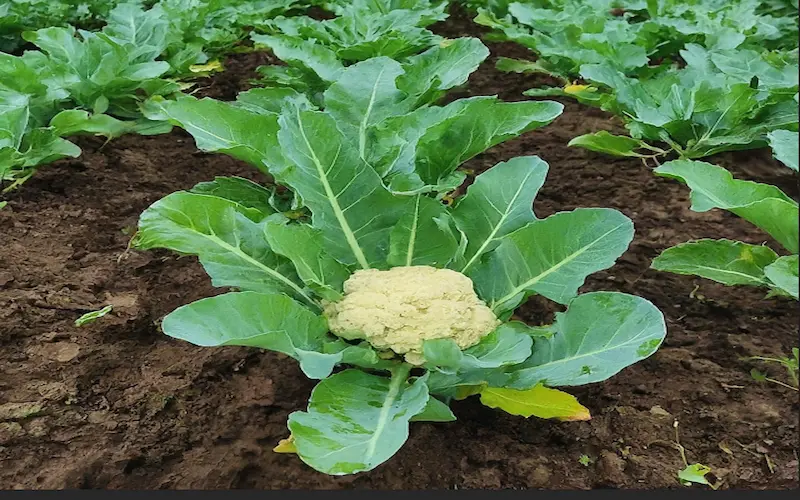
Cauliflower Growing Season In India
Cauliflower is a cool-season crop, meaning it grows best when the weather is not too hot. In India, the ideal growing season is winter, especially from September to February.
Optimum temperature: 15°C to 20°C
Early sowing: Late summer to early fall (August–October)
Best states: Odisha, Tamil Nadu, Karnataka, Maharashtra. If it gets too hot, the heads may not form properly. So, timing is everything for a good harvest
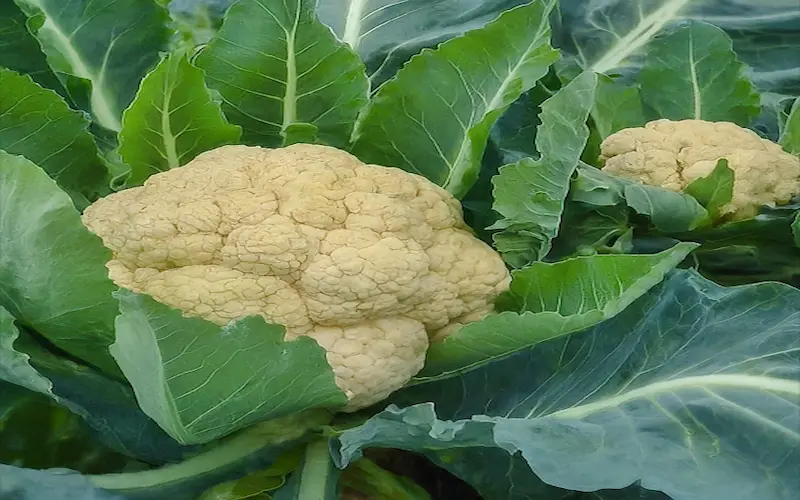
Soil Requirements and Preparation
Healthy cauliflower starts with good soil. Here’s what it needs:
Soil type: Well-drained loamy soil
pH level: 6.0 to 7.5
Preparation:
Mix compost or well-rotted manure before planting.
If the soil is acidic, add lime.
Loosen the soil to at least 12 inches deep.
Add a balanced fertilizer (e.g., NPK 10-10-10) before sowing. Proper soil structure improves root development and helps produce quality heads.
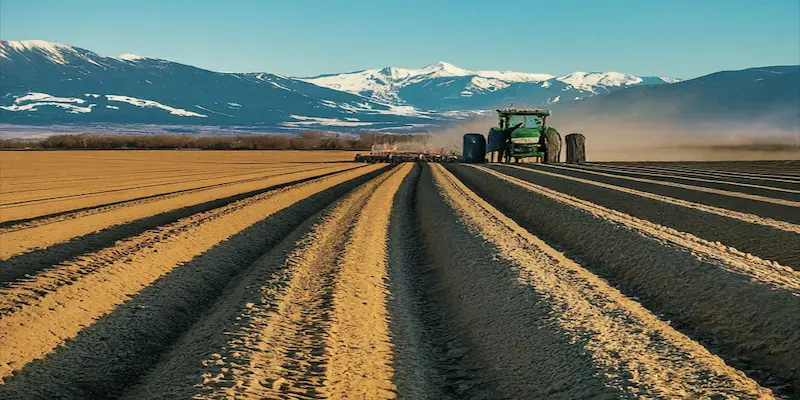
Best Cauliflower Varieties in India
Different varieties of cauliflower are suitable for various seasons and climates. Here are some top choices:
1. Snowball
- Pure white, dense heads
- Matures in 65–75 days
- Best for cool climates
2. Purple Cauliflower
- Rich in antioxidants (anthocyanins)
- Eye-catching purple colour
- Nutritious and decorative
3. Cheddar Cauliflower
- Bright orange colour due to beta-carotene
- Slightly sweet flavour
- Good source of vitamin A
4. Romanesco
- Spiral, green heads
- Nutty flavour
- Often used in gourmet cooking
5. Early Kunwari
- Matures in 50–60 days
- Best for early sowing in the Indian climate
6. Bishop (Hybrid)
- Large, uniform heads
- Pest and disease-resistant
7. Brocoverde
- A cross between broccoli and cauliflower
- Broccoli look with cauliflower taste
Pro tip: Choose your variety based on climate, season, and how you plan to use the crop (fresh, cooked, or frozen).
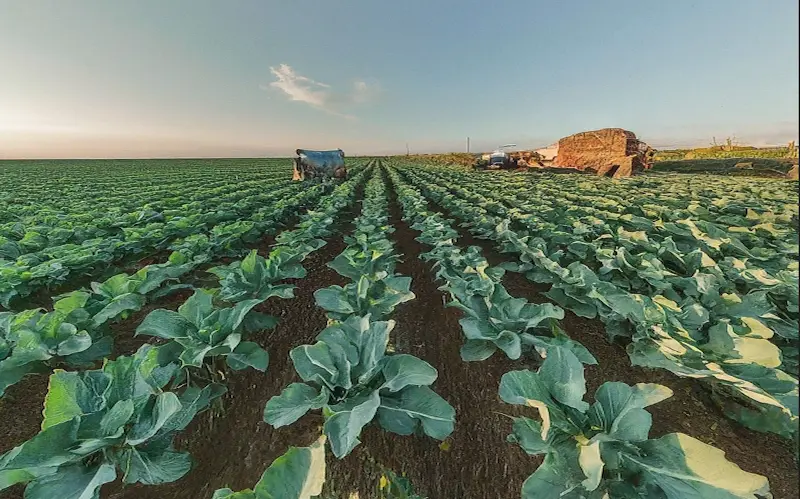
Sowing Time for Cauliflower in India
Sowing time matters a lot for a healthy harvest. Here’s a seasonal guide:
- Best sowing period: September to November
- Seed depth: 0.5 inches
- Pre-transplant time: Sow seeds 6–8 weeks before transplanting
- Sunlight: Keep the seedbed in a sunny spot
Use seed trays or a raised nursery bed and water gently. Keep soil moist, but avoid overwatering.

Ideal Planting Distance for Cauliflower
Spacing is key to avoid overcrowding and to help heads develop fully.
- Between plants: 18 to 24 inches (45–60 cm)
- Between rows: 24 to 36 inches (60–90 cm)
- For containers: Use pots at least 12 inches deep and wide
Good spacing improves air circulation and reduces disease risks.
- Raising a Healthy Cauliflower Nursery
Creating a strong nursery ensures healthy seedlings and a better yield. Follow these steps:
1. Choose Quality Seeds
- Pick seeds suited to your local climate
- Use certified disease-free seeds
2. Prepare Soil Mix
- Use a mix of garden soil, compost, and sand
- pH should be 6.5–7.5
- Add lime if the soil is too acidic
3. Sow Seeds Correctly
- Sow seeds 1/4 inch deep
- Space 1–2 inches apart
- Water gently and keep moist
4. Maintain Temperature
- Ideal temperature: 18°C to 25°C
- Germination begins in 7–10 days
5. Thinning and Transplanting
- Thin, weaker seedlings after 3–4 weeks
- Transplant when seedlings have 4–6 true leaves
6. Harden the Seedlings
- 1 week before transplanting, expose seedlings gradually to outdoor conditions
Transplanting Cauliflower Seedlings
Once your seedlings are ready, it’s time to transplant them into the main field.
- Age for transplant: 4–6 weeks old
- Ideal leaves: 4–6 true leaves
- Soil prep: Fine-tilled soil with compost or organic matter
- Spacing: 18–24 inches between plants, 24–36 inches between rows
Transplanting Steps:
- Dig small holes to fit the root ball.
- Place seedlings upright.
- Cover roots and gently firm the soil.
- Water immediately after planting.
Proper transplanting ensures strong growth and a healthy cauliflower head.
Fertilizer Requirements for Cauliflower
Fertilization is essential for healthy growth and high yield.
Basal Application (Before Transplanting)
- Add well-rotted compost or farmyard manure (20–25 tons/ha)
- Apply NPK (10-10-10) at 100 kg/ha
Top Dressing (After Transplanting)
- Apply urea in two splits:
- First 20–25 days after transplanting
- Second, at 40–45 days
Micronutrients
- Spray boron (0.25%) if you see brown curd or hollow stem
- Use zinc sulphate if leaf edges turn yellow
Balanced nutrition ensures compact heads and prevents nutrient disorders.
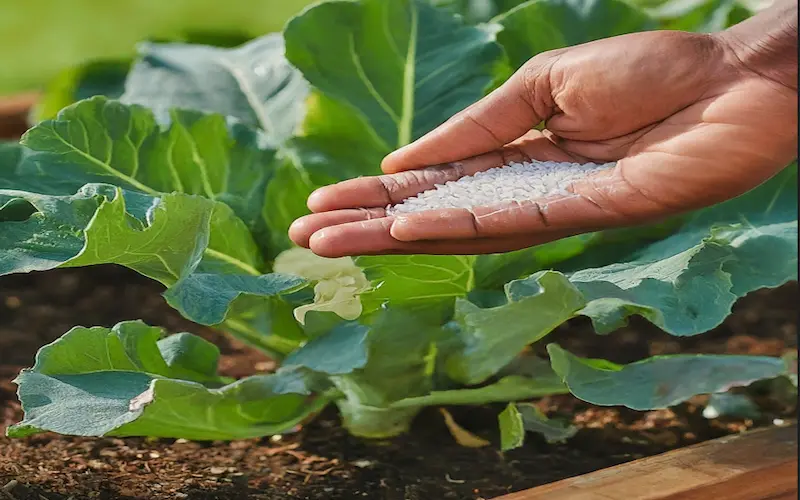
Common Pests and Diseases in Cauliflower
Keeping pests and diseases in check is important for a successful crop.
Common Pests
Aphids:
Suck sap; use neem oil or insecticidal soap
Cabbage Worms & Loopers:
Chew leaves; handpick or use Bacillus thuringiensis (Bt)
Flea Beetles:
Cause tiny holes; use sticky traps or neem spray
Common Diseases
Downy Mildew:
Yellow spots on leaves; use copper fungicide
Black Rot:
V-shaped yellowing on leaves; use disease-free seeds
Clubroot:
Swollen, deformed roots; rotate crops and adjust pH with lime
Preventive Tips:
- Maintain proper spacing
- Use resistant varieties
- Avoid overwatering
- Practice crop rotation
Harvesting Cauliflower
Harvesting at the right time ensures the best taste and texture.
- Ready to harvest: 90–120 days from sowing (depending on variety)
- Head size: 15–25 cm in diameter
- Signs of maturity: Heads should be compact, white, and firm
Harvesting Tips
- Cut the head with a sharp knife, leaving a few outer leaves
- Harvest in the morning to retain freshness
- Do not delay harvest; over-mature heads become loose and yellow

| Benefits of cauliflower farming |
|---|
There are many benefits of cauliflower farming, and a few of them are as follows. Cauliflower contains a rich amount of calcium and nutrients. This makes you healthy and strong.
|
| Drawbacks of cauliflower farming |
|---|
|
Cauliflower Yield Per Hectare
The yield of cauliflower per hectare can vary based on factors such as variety, soil quality, climate, and farming practices. Here’s a breakdown of what to expect:
Average Yield: Under optimal conditions where soil, water, and nutrients are well-managed, cauliflower can yield about 20 to 25 tons per hectare.
High-Performance Varieties: When grown with ideal inputs, some high-yielding cauliflower varieties can produce up to 30 tons per hectare. These varieties are often hybrid types that have been developed for higher productivity.
Factors Affecting Yield:
Soil Fertility: Well-prepared and fertile soil, rich in organic matter, can significantly boost yield.
Climate: Cauliflower thrives in cooler temperatures. Yields are generally higher in regions where the climate is favourable for longer periods.
Watering and Nutrients: Consistent watering and proper fertilization ensure the plants get the nutrients they need for optimal growth, directly affecting the yield.
Crop Management: Good crop management practices, including proper spacing, pest control, and timely harvesting, are essential to achieving the maximum yield per hectare.
By focusing on these factors, farmers can maximize their cauliflower yield, ensuring a productive and profitable harvest.
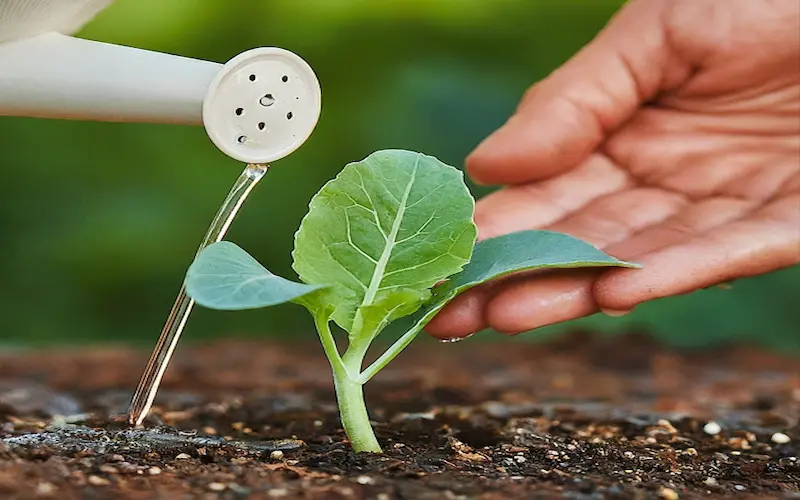
Eat good feel good
FAQs about Cauliflower Farming
Yes, rabbits can eat cauliflower, but it should only be given in small amounts. The leaves and stems are safer and gentler on their stomachs than the florets. If rabbits eat too much cauliflower, it can cause gas, bloating, or digestive upset. Always introduce it slowly and mix it with other leafy greens. Treat cauliflower as an occasional snack, not a main part of their diet.
Safe Vegetables for Rabbits
Rabbits enjoy a wide range of fresh vegetables, but they should always be given in moderation. Here are some safe options you can add to their diet:
- Carrots – best as a treat because they are high in sugar.
- Spinach – packed with vitamins, but feed in small portions.
- Kale – a healthy leafy green, given a few times a week.
- Romaine lettuce – safer than iceberg lettuce, which should be avoided.
- Cilantro – rabbits love the taste, and it’s gentle on their stomach.
- Bell peppers – rich in vitamin C, feed without seeds.
- Broccoli leaves – safer than the florets, which can cause gas.
- Cauliflower leaves and stems – okay in small amounts.
- Zucchini – a light and rabbit-friendly vegetable. Basil and parsley – aromatic herbs that make a nice snack
Because it requires a large area to grow and is more sensitive to heat and pathogens
Nitrogen-riched and organic fertilizers are best for cauliflower fields.
Cauliflowers are much more sensitive to heat, so their best cultivation period is from September to October.
Cauliflower can only be cultivated from spring to autumn.
September to October is the best season for cauliflower farming.
No, cauliflower is a cool-season vegetable.
White, purple, yellow, and green colours are abundant in the market.
Conclusion
Cauliflower farming in India is both rewarding and manageable if you follow the right steps. From choosing the right variety to preparing the soil, fertilizing well, protecting against pests, raising a healthy nursery, and transplanting correctly—each step plays a vital role. Whether you’re a home gardener or a small-scale farmer, these practical tips can help you grow fresh, nutritious cauliflower during the cool Indian winters.

- Be Respectful
- Stay Relevant
- Stay Positive
- True Feedback
- Encourage Discussion
- Avoid Spamming
- No Fake News
- Don't Copy-Paste
- No Personal Attacks



- Be Respectful
- Stay Relevant
- Stay Positive
- True Feedback
- Encourage Discussion
- Avoid Spamming
- No Fake News
- Don't Copy-Paste
- No Personal Attacks




